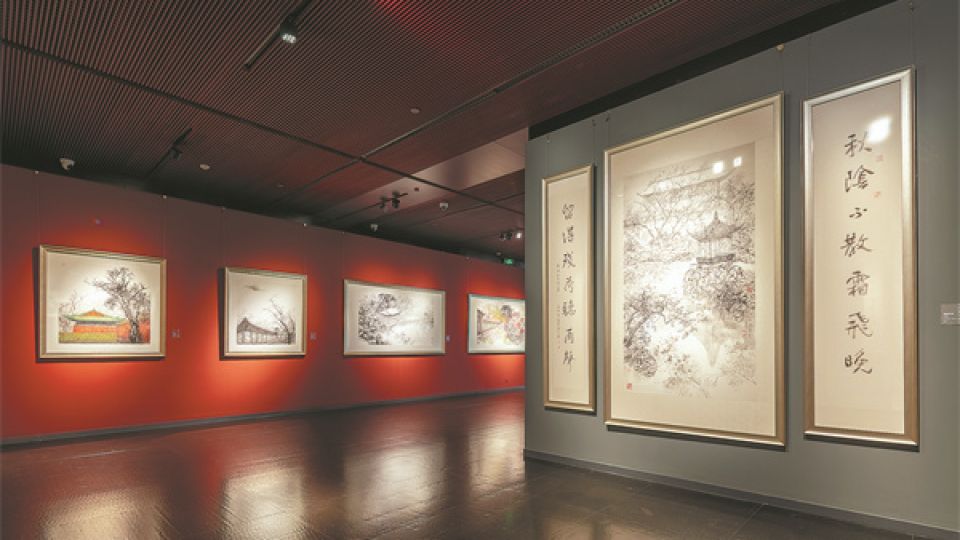September 18, 2025
BEIJING – Acclaimed artist creates paintings of nature in miniature form, evoking philosophical reflections, Lin Qi reports.
Classical Chinese gardens, whether the imperial ones found in Beijing or the private residential gardens in Suzhou, Jiangsu province, have become priority destinations for those who travel the country.
The meticulous, graceful designs exhibit how the ancient Chinese attempted to recreate nature in miniature scale for daily life, using lush plants, hollowed rocks and pavilions, bridges and corridors of fine silhouettes in the pursuit of peace, harmony and perfection.
An artist seeks to convey the same feeling when creating Chinese ink paintings. The style is half realistic, depicting landscapes and lives in the real world, and half imagined to underscore one’s life ideals and yijing, or artistic conception.
At acclaimed ink artist Wang Mingming’s ongoing exhibition at the National Centre for the Performing Arts in Beijing, he combines these two representative examples of classical Chinese artistry with his poetic strokes.
The Spiritual Realms in Ink exhibition, running until Oct 8 in NCPA’s west exhibition hall, displays nearly 100 paintings that Wang has created in recent years to celebrate the understated beauty and supernatural atmosphere of Chinese gardens, as well as the philosophical outlook on the relationship between humans and nature embodied in the rich details of garden design.
Wang, born in 1952 in Beijing, was praised as a child prodigy, whose paintings won children’s art prizes and were featured in news outlets and magazines.
Because of his gift, Wang, in his early teens, was introduced to prominent art figures, such as Li Kuchan and Wu Zuoren, who mentored him in improving his techniques and taught him the importance of accumulating cultural knowledge to achieve high artistry.
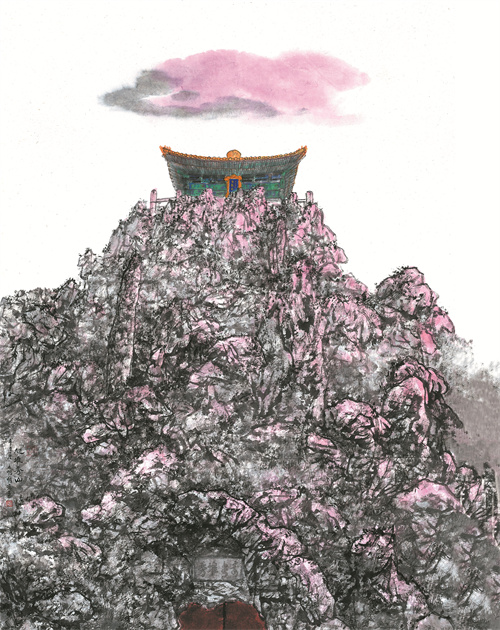
One of Wang’s works Morning Glows on Duixiu Shan. PHOTO PROVIDED BY CHINA DAILY
Wang became a professional artist at the Beijing Fine Art Academy in 1978 and worked there for decades, later undertaking the role of director of the institution for years. Retirement has allowed him more time to indulge himself in the carefree world of layered strokes and shaded colors.
Works in the current show were primarily created after he retired from the art academy.
Wang says that when he considered the exhibition’s title, a phrase came to mind — “weidao jixu” — from Zhuangzi, a compilation of classic texts named after its author, a Taoist philosopher who lived during the fourth and third centuries BC.Weidao jixu means that the dao (Tao) gathers in emptiness.
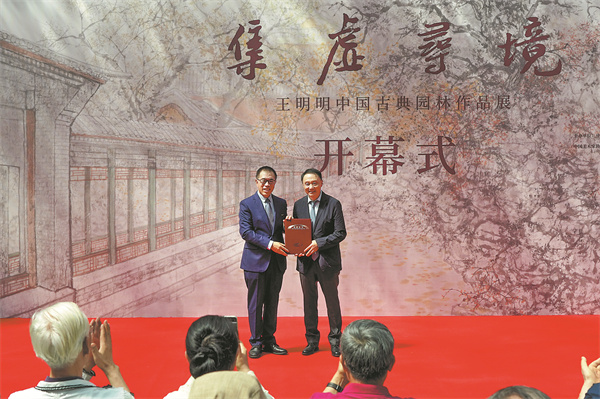
Wang Mingming (right) receives a donation certificate from Wang Ning, president of the National Centre for the Performing Arts, at the exhibition opening in Beijing. PHOTO PROVIDED BY CHINA DAILY
“It has meanings so profound, one needs to spend a long time to comprehend them,” Wang says.
There is a pursuit of “emptiness” in both the classic garden design and Chinese painting tradition through which one is to understand the richness and rules of the world. Thereafter, as Wang says, one “would ascend to a spiritual domain in which he can express himself through artistic creativity”.
To express such meditative silence in garden scenes, Wang says he uses more light, grayish colors over heavy hues. He also shuns dipping with dry, thick ink brushes. For example, when drawing mountains, he smudges the outlines to soften the hard profile of the rocks, creating a feeling of dense moisture. He believes this treatment will generate the effect of qiyun shengdong, or animation with spiritual resonance, which was first proposed by painter and art theorist Xie He of the Southern Dynasty (420-589).
Morning Glows on Duixiu Shan, a painting on display, exemplifies an attempt at that state of artistry Xie mentioned. It shows the dawn over the Duixiushan (Mountain of Accumulated Elegance), an elevated, hollowed mountain; on top sits a pavilion, together forming a famous rockery site at the Palace Museum in Beijing. The cloud, complete with a smudge of faint pink, and the rocks’ rosy touches, replicate the morning peace at the Palace Museum, meanwhile maintaining the majestic atmosphere of the former imperial palace.
Wang Ning, president of the National Centre for the Performing Arts, says elegance and vitality have erupted under the strokes of Wang Mingming, which unfold season-changing scenes before his audiences.
“He is inspired by and has reimagined nature to create a garden of his own, for the heart and soul, illustrating Eastern aesthetics in the depictions of the real and the unreal.”
Wu Hongliang, current director of the Beijing Fine Art Academy, says the exhibition, which his predecessor had been dedicated to organizing for a long time, presents the atmosphere of a yaji, traditionally a gathering of elegance attended by intellectuals in ancient times. “It reiterates the essential beauty of Chinese painting, not tending for a strong visual impact, which, in silence, evokes artistic conceptions and philosophical reflections.”
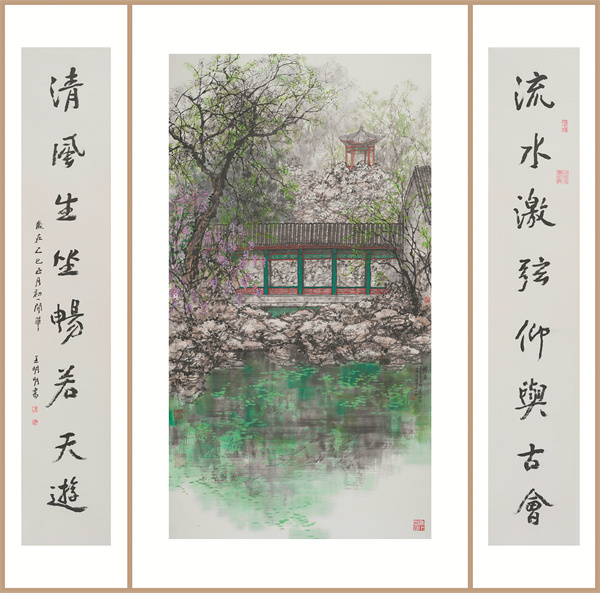
The artist donates A Doze of Spring, together with a calligraphic couplet, to the National Centre for the Performing Arts. PHOTO PROVIDED BY CHINA DAILY
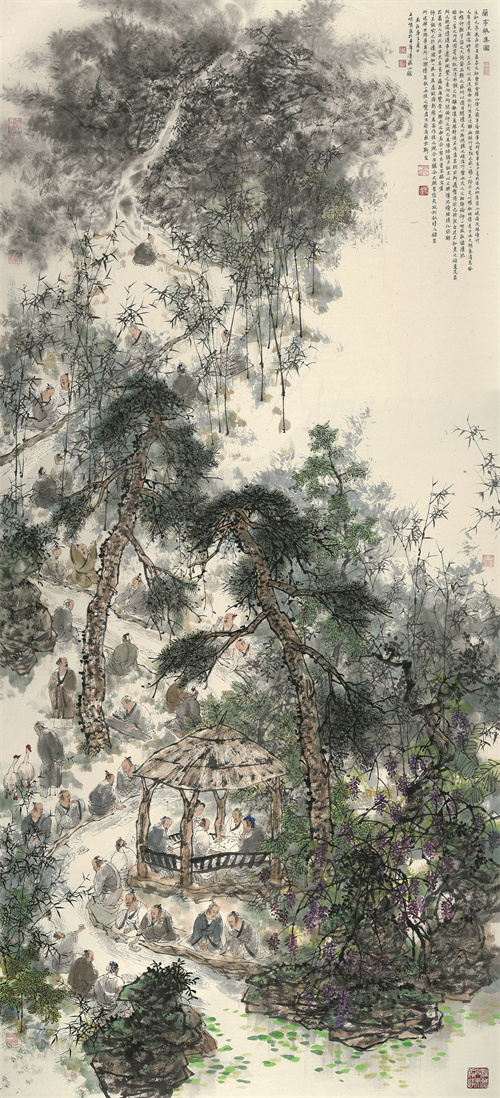
Wang’s work Lanting Yaji (Gathering of Intellectuals at Lanting Pavilion). PHOTO PROVIDED BY CHINA DAILY
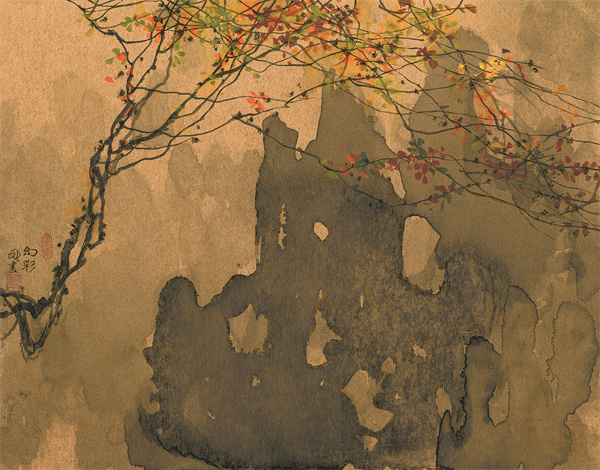
Another of his works, entitled Fantasy. PHOTO PROVIDED BY CHINA DAILY


